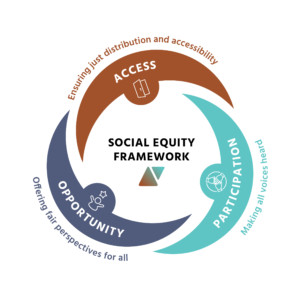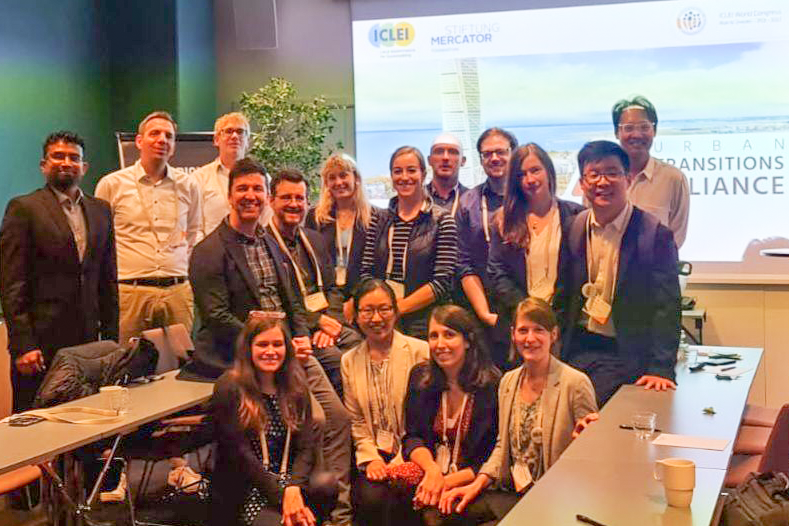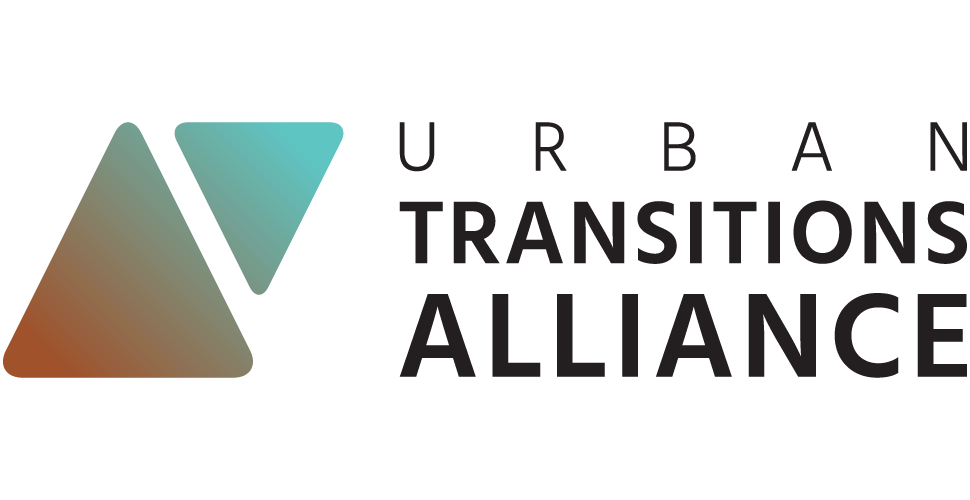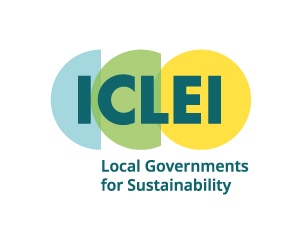HOW AN ALLIANCE HAS PROVIDED A MUCH NEEDED BOOST IN EQUITY-FOCUSED KNOWLEDGE SHARING FOR INDUSTRIAL CITIES
By Mark Wessel
This blog post also appeared on CityTalk – A blog by ICLEI on 25 May 2022.
Created four years ago as a platform for industrial cities to exchange knowledge and best practices towards a green and just transition, the Urban Transitions Alliance is formally winding down.
And yet, not unlike the proverbial booster rocket falling away after its job of launching a spacecraft into orbit is done, the Alliance has given sixteen cities on three different continents a much needed lift, as they seek to address the social, economic and environmental challenges associated with climate change.
Interestingly enough, the “fuel” for the Alliance has come from the participating cities themselves rather than some model city or consulting firm that comes up with all of the answers.
Speaking on behalf of E-Town, Huairou and Yuhua District in China, Ge Liu, Strategy Manager for ICLEI’s East Asia Secretariat says that the former coal-mining city of Essen, Germany has been a source of inspiration because “their development strategy is really encouraging. They’ve gone from this heavy industrialized city to a green capital in Europe.” Liu says the Chinese cities have paid particular attention to the decision making process Essen has taken and how it has worked with the private sector, using a multi-stakeholder approach to facilitate the city’s transition.
Duncan Booker, who was the COP26 Stakeholder Manager for the City of Glasgow says his city has benefitted from the knowledge exchange they’ve had with such other post-industrial cities such as Pittsburgh, Buffalo and Minneapolis, and the effect city funded initiatives can have towards catalyzing positive change. Collectively, these legacy cities have been affected by “scars that are not easily repaired,” as Booker puts it and based on their own experience, “there needs to be that kind of public sector intervention up to the point where (investment) becomes attractive to the private sector.”
Helping to underscore the give and take dynamic of the Alliance, Buffalo’s Senior Resiliency Manager Kelly Mosher says that on the one hand they’ve found inspiration from cities like Cincinnati, which “has been able to do some really innovative work around mapping community… population and economic data to make strategic investments, which the city of Buffalo sees a lot of value (in) too.” On the other hand, Mosher takes pride in the fact that Pittsburgh, which she describes as one of “the leaders of industrial cities” and is arguably further along the road to recovery than her own jurisdiction, has still gained important knowledge and insight into some of Buffalo’s own initiatives. Initiatives such as “green infrastructure, water treatment and power for our municipal buildings… which (Pittsburgh) is only just starting to think about.”
Michael Leischner, the Department Head for Climate Protection, Air Control and Noise Reduction for the City of Dortmund says they’ve established an ongoing dialogue with their Pittsburgh counterparts. “We maintain an intensive exchange… in the areas of agriculture, sustainable food and hydrogen projects.” The exchange has also included site tours of their respective cities and (prior to COVID), face to face brainstorming exchanges which have “opened up new ideas and often led to increased commitment” to their respective projects.
“Leaving no one behind” has been a common thread for Alliance members, and often the cities have responded with on-the-ground initiatives skewed toward their own specific needs. For instance Cincinnati, which has the eighth highest Energy Burden (percentage of household income going toward utility costs) in the United States, has created a program called WarmUp CINCY, whereby “if you are experiencing energy poverty and you’re a renter, you can come to us and we will do a free audit of your unit,” says Oliver Kroner, the city’s Sustainability Manager. “We can then make lighting upgrades, weatherization upgrades and appliance upgrades that will help you reduce your electricity bill over time.”
Cincinnati has also embarked on a community-wide initiative to support less affluent parts of the city with what’s known as Climate Safe Neighborhoods. “This is a new effort where we are doing deep dive resilience, planning efforts at a community level,” observes Kroner. With this program, “over the course of six weeks, we develop a community resilience map. We identify where the urban heat islands are… where additional tree planting is needed… where a bus shelter would improve access to the bus system,” all of the above tied to promoting resilience through such measures as the creation of community cooling stations and emergency shelters.
Buffalo, which has one of the oldest building stocks in the country, has established an equity-focused program called Green and Healthy Homes, which Mosher says “got started as a way to address indoor built environment hazards within our communities and has expanded to include (also dealing with) environmental and weather related hazards.” While the age of the house plays a critical role in determining eligibility for the initiative, household income is a key consideration to ensure much of the financial support is funneled to the city’s most vulnerable residents.
To translate the concept of social equity across regions, the Alliance has developed a simple framework that uses the three dimensions of access, participation and opportunity to communicate about social equity with different stakeholders, mainstream equity thinking and ensure municipal programs are designed with consideration of all local communities.

Environmental pollution has long been an unwanted by-product of industrialization and not surprisingly, an ongoing challenge of the Alliance’s cities, whether they are post-industrial or still in the midst of industrial growth. In the case of Glasgow’s Sighthill neighbourhood, once home to the largest chemical works operation in the world, dealing with contaminated soil has been a major concern. The city’s response has been to put public money into decontaminating the land by embarking on a major soil remediation initiative. These steps have dramatically transformed once barren land into a place where residential development is thriving. In the spirit of “building back better” Booker says, “we now have a mix of owner occupied, rented and social rented.” A place where unlike concentrations of low income housing “you shouldn’t be able to tell the difference of who’s who” between the residents living in this neighbourhood.
For Alliance member E-Town, Huairou and Yuhua District, pollution concerns are linked with existing industry and in particular, air quality issues. “All three are located in the northern part of China,” Liu observes. Coal-fired power plants are still used to support industry in these areas, not just in Beijing but the surrounding area. In response, Liu says a more comprehensive (versus city-specific) regional action plan to address air quality has been developed. And through initiatives ranging from investments in sustainable mobility to improving public transit as a way to get more cars off the road, Liu says these cities are realizing the co-benefits of reducing air pollution while taking action to help mitigate climate change.
Recognizing the long-term challenge global warming poses, Liu says that despite the fact the Alliance funding is winding down, the Chinese city members are keen to continue their dialogue and knowledge exchange with peer cities. “They want to have more international cooperation and put more effort into advocacy (tied both to climate resilience and mitigation efforts).”
The importance of this continued dialogue and exchange of ideas isn’t lost on Cincinnati’s Kroner, who notes that yet another source of inspiration for his city as a result of its exchange with Alliance counterparts in Europe has been “seeing how they’ve integrated biking infrastructure and pedestrian infrastructure versus our car oriented city. It has been eye opening (and) we’re trying to borrow from that framework. But these aren’t things that you can reverse overnight.” With any luck though, with the support and feedback of their Alliance peers, they might just speed the process up.

Urban Transitions Alliance cities and partners have recently convened at the ICLEI World Congress in Malmö. Back, from left to right: Magash Naidoo, ICLEI World Secretariat; Klaus Kordowski, Stiftung Mercator; Sebastian Schlecht, Baukultur NRW / lala.ruhr; Oliver Kroner, City of Cincinnati; Michael Leischner, City of Dortmund; Samira Pfeiffer, ICLEI World Secretariat; Aubrey Germ, City of Baltimore; Daniel Wolny, City of Katowice; Stephan Rath, Gelsenkirchen Science Park; Beata Urych, City of Katowice; Xuan Xie, ICLEI East Asia; Ying-Chih Deng-Sommer, ICLEI World Secretariat. Front, from left to right: Rebecca Kiernan, City of Pittsburgh; Yun-Ju Chen, ICLEI World Secretariat; Marion Guenard, ICLEI World Secretariat; Rebecca Wessinghage, ICLEI World Secretariat.
As Urban Transitions Alliance Cities have recently convened at the ICLEI World Congress in Malmö for a much-anticipated personal meeting and to celebrate five years of cooperation, platforms for continued exchange were at the center of conversations. The Malmö Commitment on Inclusive and Equitable Communities, launched at the summit and already adopted by Alliance member Glasgow, provides one tangible pathway for future equity-focused collaboration of Alliance cities.


